Drip Irrigation Basics
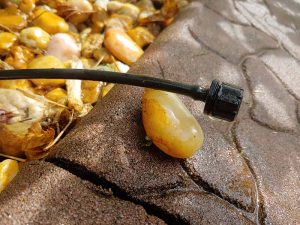
Drip irrigation is regarded as an economical and efficient approach to watering. The following are some drip irrigation basics to help you understand and implement a system of your own. These systems are 90% efficient compared to other systems. That means less water is wasted while irrigating your plants. These methods are commonly used in dry regions where blanket watering is less effective and wastes too much precious H2O..
Drip Irrigation Uses
Large vegetable farms where water conservation is important and plants are spaced farther apart.
Newly planted trees, shrubs and plants that require extra water and nutrients
Geographical zones that impose water restrictions like the southwest.
Areas of your yard or garden that require extra moisture.
Most Drip irrigation systems are easy to install and relatively cheap compared to other methods of irrigation. Drip irrigation is easy to design. It also reduces the risk of your plants contracting diseases due to high levels of moisture.
The method works by allowing water to drip directly and slowly onto the soil through a series of tubes and emitters. The water dripping onto the soil flows through small water emitters placed near plants.
Drip irrigation is especially useful in irrigating sloped gardens. It penetrates the soil deeper because of the slow rate of flow. This allows water to soak into the soil before running off. Drip irrigation has many advantages, including being reliable, efficient and easy to use.
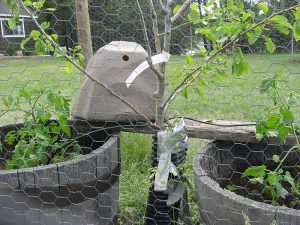
How does a drip irrigation system work?
Water from emitters is delivered across your garden through tubing known as dripper lines connecting to the emitters. The drip line is most commonly 1/4 inch. Every dripper emits a reasonable amount of water slowly to the plants’ root zone near and under the plants.
Some drippers are adjustable allowing the gardener to adjust the flow of water. Drippers are rated at the amount of Gallons Per Hour of water that flows through. Drip systems can work by gravity, pressure, or a pump.
.
Why Use Drip Irrigation?
Drip Irrigation conserves water. Water is slowly released over specific spots or areas versus blanket watering with a hose or sprinkler system. The fact that it only places water exactly at the spot you want is why it is a more efficient watering system.
Additionally, correct implementation of drip irrigation increases productivity as it promotes healthy growth and decreases bugs associated with standing water problems. It also controls the growth of weeds by only watering specific areas. This is an important concept to drip irrigation basics .
Drip systems ensure consistency in the growth of plants. If fertilizers are added to the water source, it can also deliver high levels of nutrients to your plants. Using drip irrigation also protects your plants from high salinity caused by using excess fertilizer.
The approach offers a solution to the agricultural industry as it is low-tech and it is efficient to small farmers. Hope this info has helped you understand Drip Irrigation Basics.
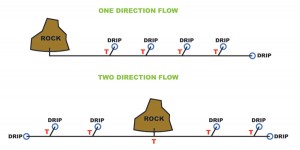
Where to use Drip Irrigation
Landscapes Suitable for Drip Irrigation.
Drip irrigation is preferable in most landscapes where spot irrigation is more preferred. Blanket watering is preferred for wide areas like yards or golf courses..A drip system is suitable for use in narrow spaces, desert landscapes and in places where runoff is a challenge. The approach is appropriate for watering potted plants, vegetable gardens and fruit trees. Drip systems have a wide range of use and suit your budget easily.
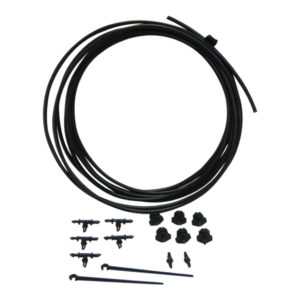
Drip Irrigation Components
Components of a Drip System
The drip system consists of the following:
1. Valves
These are used to turn on and off the irrigation system. They are automatically or manually operated, and they are connected to the irrigation controller. There are two types of valves and these are:
I. Control valves are used to turn on and off the water to specific areas of the farm that needs to be watered separately.
II. Isolation valves
They are used for turning off water in the drip system manually. They are located at the water source so that they can turn off the water during various occasions like repairs and when there is no irrigation taking place.
2. Timer
The timer is an irrigation clock that is programmed in such a way that it can automatically turn on the control valves for a particular time. Automating your drip system allows you to control how much water you want to release and at what time of day.
3. Pressure regulator
The drip system requires a certain amount of pressure to operate effectively. It requires low pressure, and the pressure regulator is therefore used to reduce the amount of incoming water pressure to about 20 psi which is the best pressure for the drip system.
4. Filter
This is used to screen and remove particles from the irrigation line. This aims at maintaining clean water supply and avoiding the blockage in the pipes. The particles can easily plug in the openings of the emitters and block the flow of water.
5. Emitters
These are used to deliver water to the plants at slow rates. They are usually located between the polyethylene tubing and the micro-tubing. They control the speed at which water drips into the soil. They are made of plastic material and they snap onto the drip tube.
6. Micro-tubing
They deliver water for irrigation to the emitters from the lateral lines. They are around 5 feet long.
7. Cap
The caps are attached at the end of every lateral line. When removed, they flush debris from the irrigation laterals.
8. Backflow Preventer
This is a tool that is used to prevent dirt materials from being sucked into the drip system. This is installed in all drip systems to ensure that there is a flow of clean water and no blockage of the emitters.
9. Mainline
This is a pipe that connects the water source and the valves. It is made of copper, galvanized steel, or polyethylene tubing. The Mainline can also be a PEX pipe which is made of polyethylene to accommodate high pressure from the source of water.
10. Lateral
This is a pipe that is connected and located between the drip pipe and the control valve. It is made of PVC, polyethylene or PEX. Its location is at the downstream of the pressure regulator to accommodate the high pressure. In the drip system laterals are used in occasions where multiple drip tubes are required, for instance, when the area to be irrigated is significant for a single pipe to handle.
11. Drip Tubing
This is a specialized tube in the drip system. It is usually laid on the ground between plants to be watered. This is where the emitters are installed. The drip tubing is made of low-pressure rating, and it should not be buried in the ground as moles can easily chew them. To avoid this, ensure that you just lay the drip tubing on the ground.
12. Drip tube fittings
These include devices like the ells, tees, adapters and couplings. They are generally connectors made of plastic material used to attach drip tubes to other pipes and control valves. When installing the drip tube fittings ensure that they fit precisely to one another by selecting the right sizes.
Drip Irrigation Systems
There are a lot of different systems available to choose from.
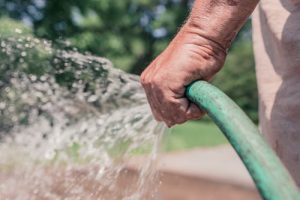
Large systems are spread out over huge areas. These systems are used for large farming applications or garden center presentations.
Drip systems can be combined with existing sprinkler irrigation systems in rural and urban settings. Most new homes in semi arid regions have been built with sprinkler systems for the last 30 years or so. If your home does not have an existing sprinkler system you can have one installed or do it yourself. Usually, this is a pretty big project and and requires planning, experience, and is fairly expensive.Consult your local garden center or the internet for advice and costs.
There are a few portable drip irrigation kits available that require much less expense and expertise. A few examples are Watering Rocks Portable Automatic Irrigation Drip System Kits and Treegator portable drip tree bags.
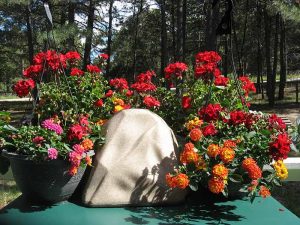
No matter what method you use, drip irrigation will save you a lot of time watering your garden and plants. It also provides a more consistent way to make sure your plants receive adequate water and nutrients.
We sincerely hope this article will provide you with drip irrigation basics, how it works, and what the components are.
We are here at watering-rocks.com if you are interested in getting more information about our unique inexpensive portable automatic irrigation drip system products.
